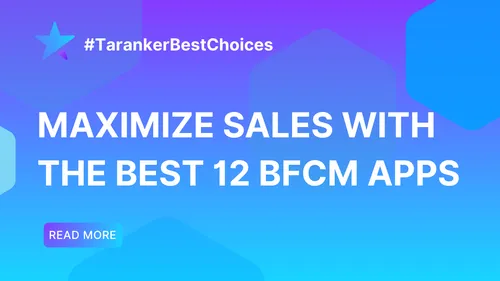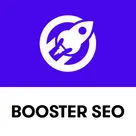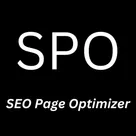In the world of search engine optimization (SEO), meta titles and descriptions play a crucial role in determining how web pages are perceived by search engines and users alike. These elements act as first impressions in search engine results, influencing a user's decision to click through to your site. Crafting them effectively can increase click-through rates, enhance visibility, and ultimately improve rankings.
This guide offers insights and strategies to help you optimize meta titles and descriptions for better search engine results. By adhering to the latest SEO practices, you can ensure these components not only capture attention but also convey relevance to both search engines and potential visitors. Whether you're a seasoned SEO expert or just starting out, understanding how to fine-tune these snippets is essential for improving your website's performance.
Optimizing these elements isn't just about stuffing keywords but involves crafting clear, compelling, and concise descriptions that accurately reflect the content of the page. Let's delve into proven techniques and expert recommendations to make your meta titles and descriptions stand out in the crowded digital landscape.
Understanding the Role of Meta Titles and Descriptions
Meta titles and descriptions are vital elements in the realm of SEO, serving as a digital handshake between your webpage and its potential visitors. These concise, informative tags not only inform search engines about your content's focus but also significantly influence user engagement by shaping the first impression of your page in search results. When crafted well, they can dramatically improve your click-through rates, leading to enhanced visibility and higher rankings. To fully harness their power, it's essential to comprehend their specific roles and how they align with search engine expectations.
- Meta titles should succinctly reflect the page's content, ideally incorporating primary keywords and brand names.
- Descriptions should provide a compelling summary of the page, encouraging users to click through with persuasive language.
- Both elements must stay within character limits (roughly 60 for titles, 160 for descriptions) to prevent truncation in search results.
By understanding these principles, you lay the groundwork for optimized content that resonates with both algorithms and audience needs.

Crafting Effective Meta Titles
Meta titles serve as the first impression of your webpage in search engine results. To craft effective meta titles, focus on conciseness while integrating primary keywords to align with user search intent. Maintain a length of 50-60 characters, ensuring that the titles remain descriptive enough to catch user interest. Here are some key strategies:
- Include Primary Keywords: Ensure your meta title includes one or two primary keywords that align closely with the content of the page.
- Keep it Descriptive: Use action-oriented language that sparks curiosity and encourages clicks.
- Brand Differentiation: Incorporate unique brand elements where appropriate to stand out from the competition.
- Avoid Keyword Stuffing: Refrain from overloading your title with keywords, as this can lead to search engine penalties.
By following these guidelines, you can create meta titles that not only improve visibility on search engines but also drive higher click-through rates.

Creating Compelling Meta Descriptions
Although meta descriptions do not directly influence rankings, they play a significant role in click-through rates. Properly optimized meta descriptions win the audience's attention by providing a brief, relevant summary of the page's content. Ensure that each description is 150-160 characters long to fit search engine criteria.

Tips for Creating Compelling Meta Descriptions:
- Incorporate relevant keywords naturally to align with search intent.
- Include a compelling call-to-action, such as \"Learn more\" or \"Discover now,\" to entice users to click.
- Avoid repetitive phrasing—each meta description should be unique.
- Focus on user benefit by highlighting key value propositions or solutions your page offers.
By following these strategies consistently, you can enhance your site's appeal on search engine results pages and drive more organic traffic.
Incorporating Keywords Strategically
Effective keyword integration is crucial for optimizing meta elements and enhancing your website's search engine visibility. Begin with comprehensive keyword research using tools like Google Keyword Planner to identify terms with an optimal blend of search volume and competition. To maximize impact, place your primary keywords towards the start of both meta titles and descriptions. This strategy not only improves the potential for ranking higher in search results but also draws user attention effectively. Consider the following points:
- Include primary keywords early in titles and descriptions to capture the essence of your content efficiently.
- Ensure keywords align with user search intent and deliver on the promises made in meta descriptions.
- Balance keyword density to avoid spamming and ensure readability.

Avoiding Common Mistakes in Meta Optimization
Optimizing meta titles and descriptions significantly impacts search engine rankings. Here’s how to avoid common mistakes:
- Duplicate Titles/Descriptions: Ensure each page has unique meta tags; duplicates confuse search engines.
- Generic Content: Tailor meta data to the page’s specific content and target audience, enhancing relevance.
- Mobile Optimization: With the rise in mobile usage, ensure meta elements display correctly on all devices for a comprehensive SEO strategy.
By focusing on these aspects, you’ll improve the visibility and effectiveness of your webpages, appealing to both search engines and users. Applying these strategies consistently will bolster your site’s authority, ultimately driving better rankings.

Monitoring and Adjusting for Continuous Improvement
For sustainable SEO success, it's crucial to track the performance of your meta titles and descriptions over time. Utilize analytics tools to gather insights on how these elements impact your page rankings and website traffic. This data can reveal patterns and highlight areas needing improvement.
- Utilize Analytics Tools: Employ tools like Google Analytics and Search Console to monitor click-through rates (CTR) and page rankings regularly.
- Test Different Variations: A/B test various meta titles and description formats to find the most effective combination.
- Make Data-Driven Adjustments: Adjust your strategies based on performance data to stay ahead of the competition and enhance your search visibility continually.
Maintaining an adaptive approach allows you to leverage real-world insights effectively, ensuring your content remains visible and engaging to your target audience.

Optimizing meta titles and descriptions is a vital part of any effective SEO strategy. Through this guide, you have learned the significance of crafting these elements thoughtfully to enhance your site’s visibility on search engine results pages. Key points to remember include ensuring your meta titles are concise yet descriptive, and that your descriptions are compelling enough to entice clicks while accurately summarizing content. Applying these principles can lead to improved rankings and increased user engagement.
Consistent monitoring of analytics is essential to ensure that your meta elements continue to perform optimally over time. Regular adjustments based on data insights will keep your strategy aligned with the ever-evolving SEO landscape. Remember, maintaining a balance of keywords and readability is crucial to engage both search engines and users effectively.
- Ensure meta titles are unique and under 60 characters for optimal display.
- Meta descriptions should be clear, relevant, and within 150-160 characters.
- Incorporate primary keywords naturally to boost relevance and SEO impact.
- Evaluate performance through tools like Google Search Console for continuous improvement.
As you continue to refine your approach to meta optimization, never underestimate the power of testing and iteration. Stay informed on SEO best practices and industry changes to maintain a competitive edge. Implement these strategies consistently, and you can enhance your site’s search presence and drive more meaningful traffic. Act now, review your current meta elements, and take the first step towards better rankings today!













